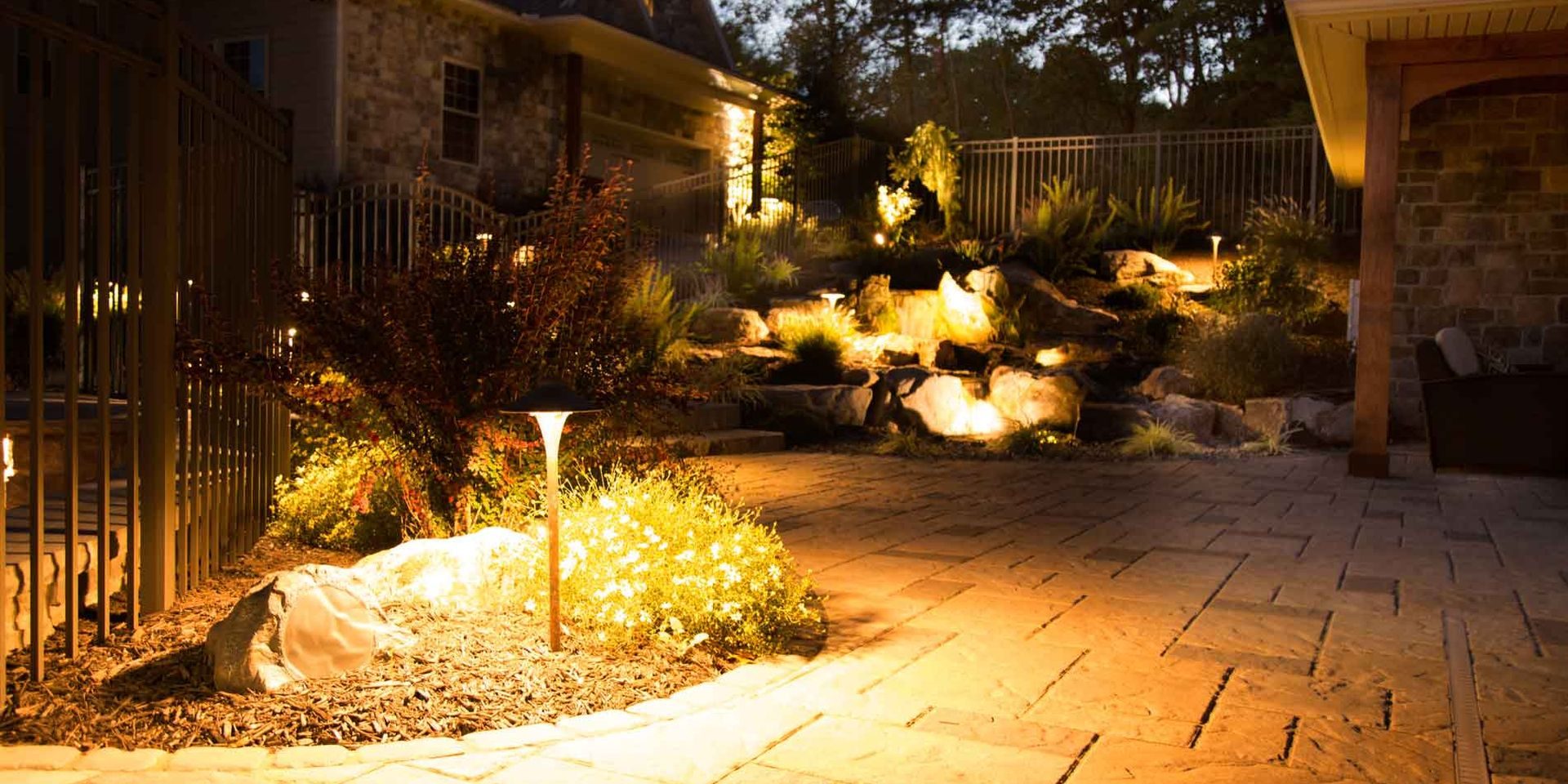
There are 6 major lighting concepts that will aid in the design of your Altoona, State College, Johnstown, and Bedford Pennsylvania area home: Cohesion, Depth, Focal Points, Quality and Direction, Perspective, Balance and Symmetry.
Cohesion refers to the overall appearance of the scene as one continuous panorama. If there are unlit areas near illuminated ones, then the viewer’s visual experience is interrupted. These “black holes” detract from the beauty of the design and fatigue the eyes.
Depth refers to the strategic placement of fixtures using different light levels to achieve a three-dimensional scene. Depth requires lighting areas that are in the foreground, in the middle, and in the back of the scene. The proper use of high, medium, or low wattage lamps (with varying beam spreads) helps establish depth by allowing the designer to create scenes that draw the eye from near to far.
Focal Points allow the designer to not only paint a picture with lights but direct a scene with light. These focal points may be unique features of the property such as, statuary or water features; or they may be functional points such as entranceways, sitting areas, or gathering places.
Quality and Direction are unique assets of low voltage lighting. Instead of harsh glare from bare bulbs, light is directed to the desired location. In a good lighting design, light sources are not seen, only the reflections of their light off a variety of surfaces. Quality of lighting can be manipulated through a variety of lighting techniques.
Perspective refers to the viewers experience from various locations both outside and inside the home. The design will allow the lighting scene to be appealing from all possible vantage points.
Balance and Symmetry refers to the features of the landscape that define its appearance. If there are repeating patterns such as rows of bushes, fencing, or stone walls, then the design needs to light those forms in a way to preserve that symmetry. The design also needs to balance the lighting so that one side of the property is not brighter than the other.
